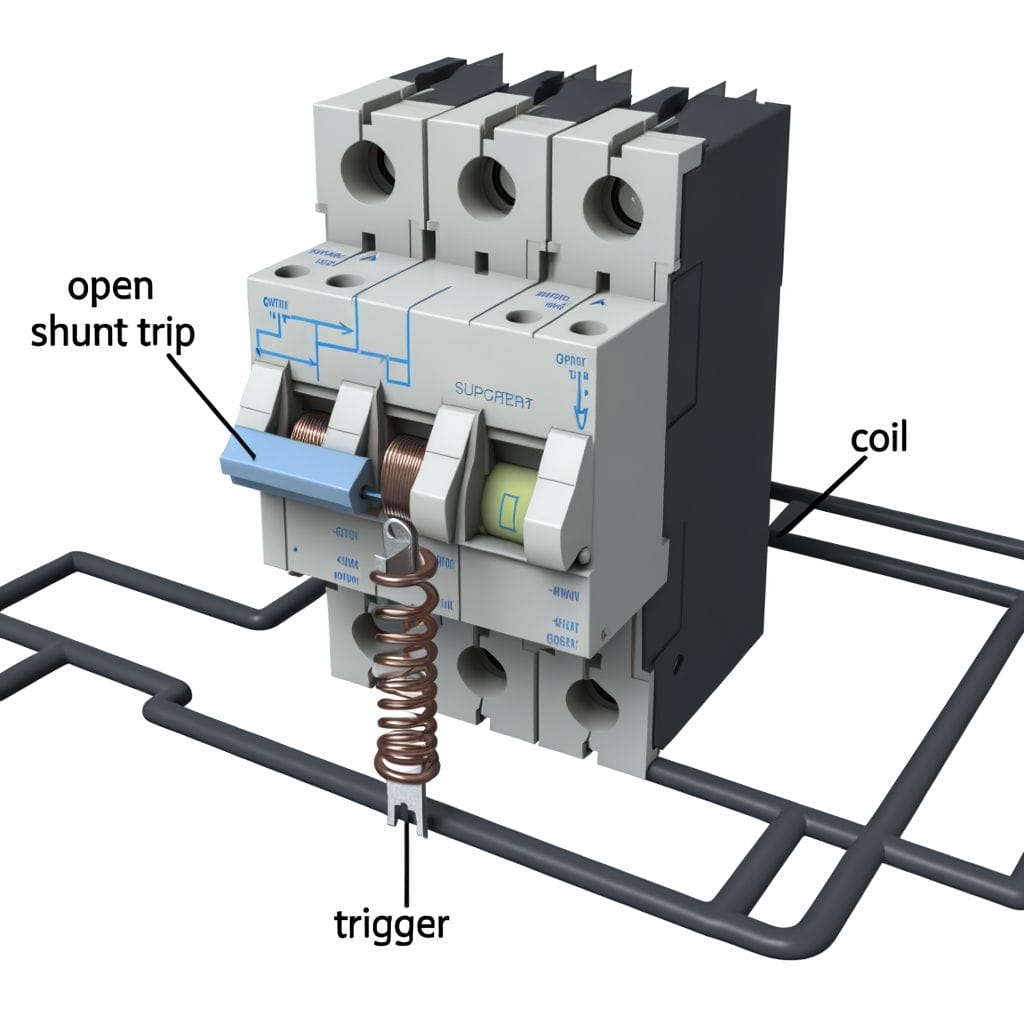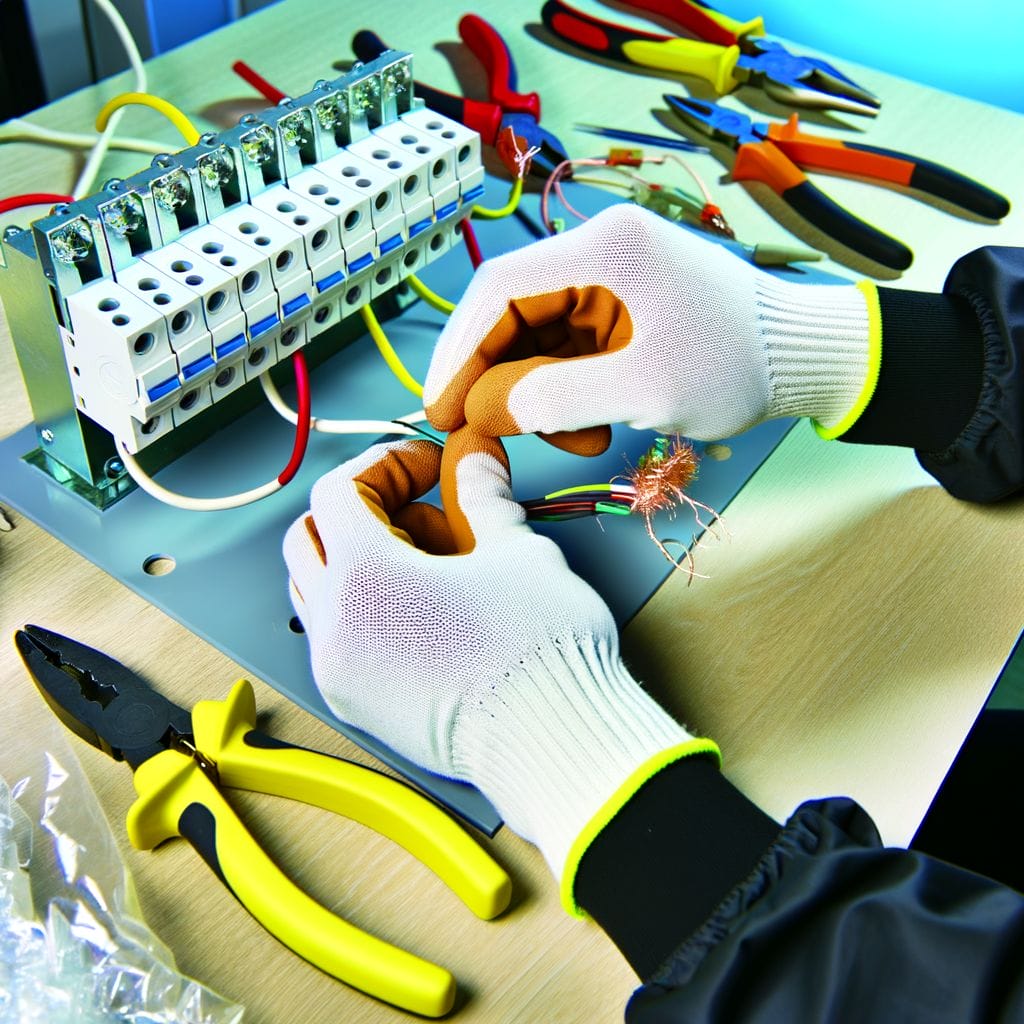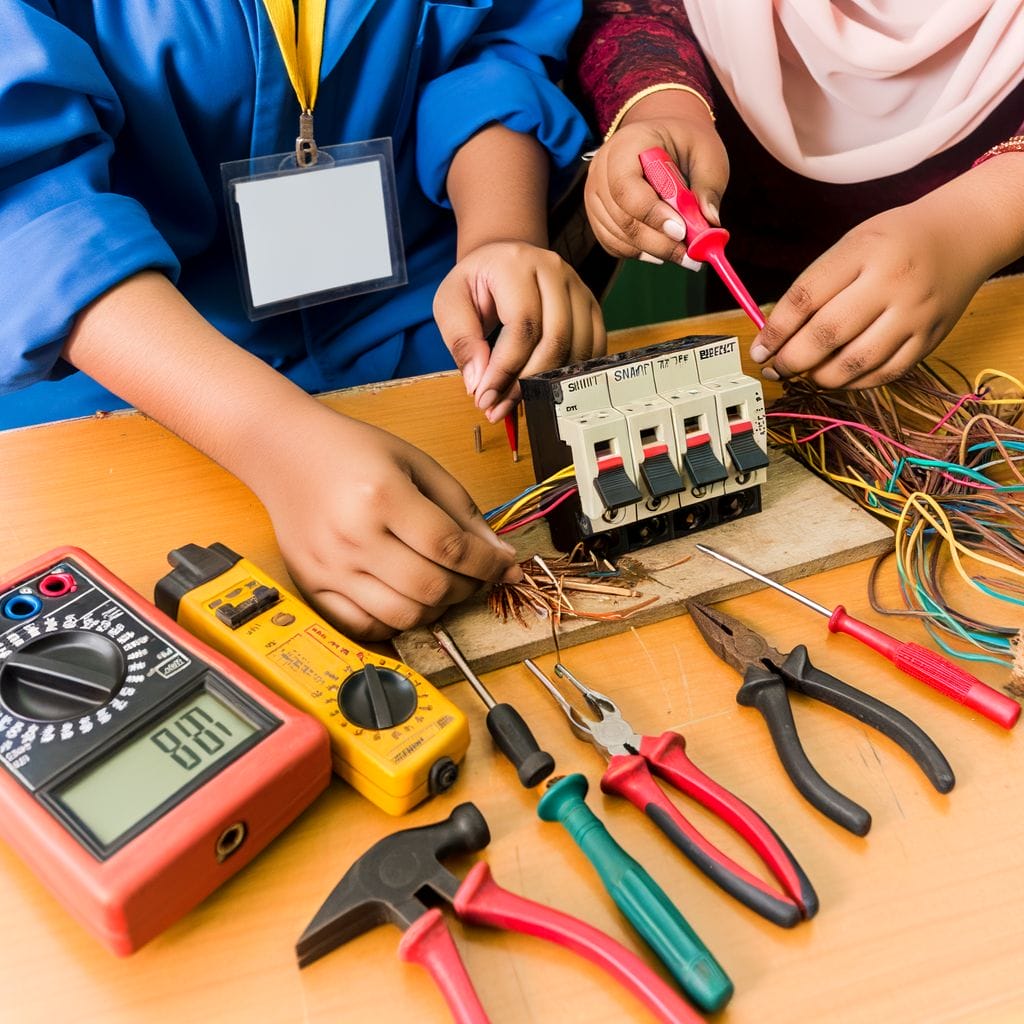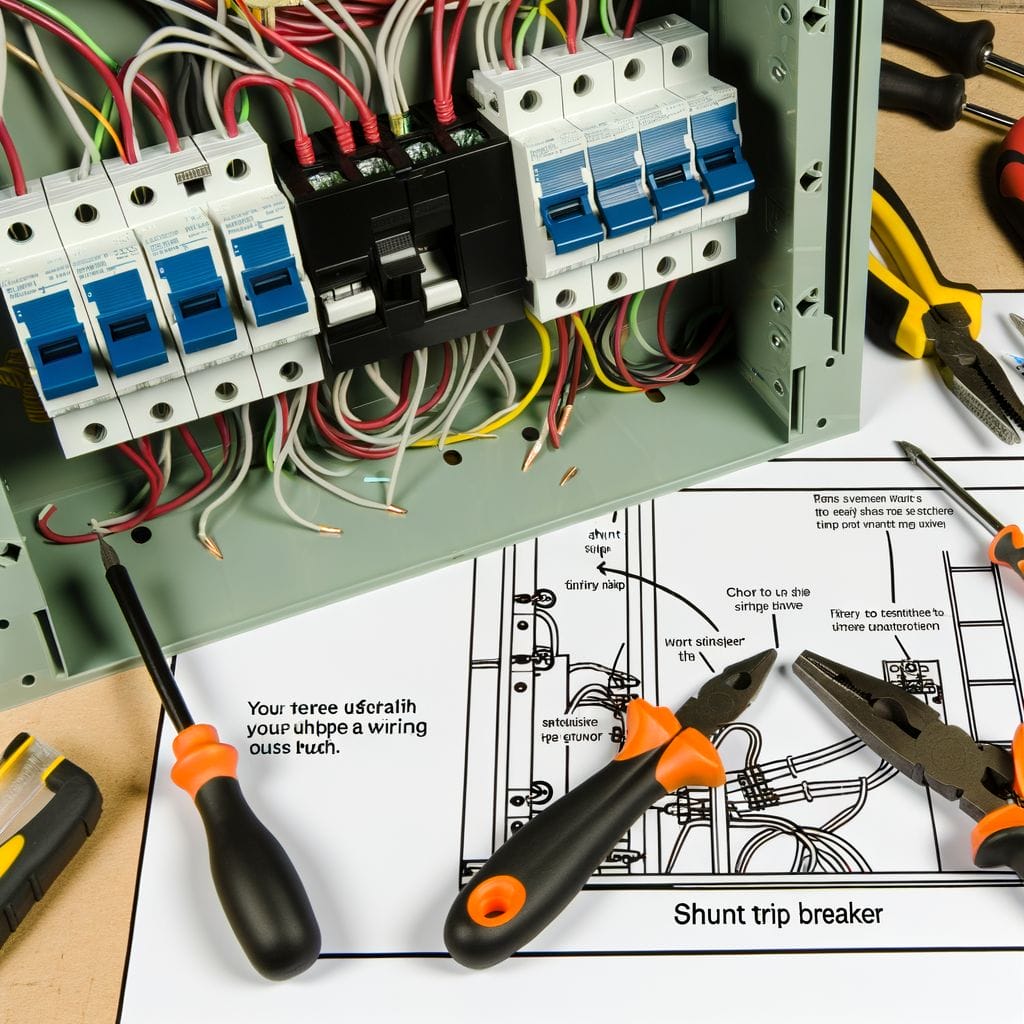Wire A Shunt Trip Breaker: Your Step-by-step Visual Guide
In the world of electrical engineering, dances with complex equipment are common. Few dances are as intricate as the one with the shunt trip breaker. As seasoned professionals, we guide you through this delicate ballet, ensuring your safety and the seamless operation of your electrical system.
Our comprehensive visual guide will demystify shunt trip breaker wiring, breaking down the process into manageable steps. By the end of this journey, you’ll possess the knowledge and skills to wire a shunt trip breaker with confidence.
First, let’s explore what a shunt trip breaker is and why it’s a crucial component in an electrical system.
Key Takeaways
- Shunt trip breakers are crucial in industrial settings and high-risk areas to prevent electrical fires and other hazards.
- The wiring diagram of a shunt trip breaker allows it to receive a signal from a separate source for immediate shutdown.
- The key parts of a shunt trip breaker include the coil, breaker mechanism, and trip unit, which work together to cut off power in case of overloads or faults.
- Proper installation and regular maintenance of shunt trip breakers are essential for ensuring system safety and efficiency.
Understanding the Importance and Functionality of Shunt Trip Circuit Breakers

Diving into the heart of our discussion, it’s crucial to understand just what a Shunt Trip Circuit Breaker is. This innovative device shuts off an electrical circuit when it detects a problem, such as an overload or short circuit. This proactive functionality greatly reduces the risk of electrical fires and other potential hazards.
Its unique design allows the breaker to receive a signal from a separate source that triggers an immediate shutdown when necessary. This feature is particularly beneficial in environments where immediate circuit disconnection is paramount, like in industrial settings or high-risk areas.
Precision is key when installing a shunt trip breaker. A wrongly connected wire can compromise the breaker’s functionality, possibly leading to a dangerous situation. So, we strongly recommend professional installation to ensure the safety and efficiency of your electrical system.
Learning the Basics: Diagrammatic Representation of a Shunt Trip Breaker

To grasp the workings of a shunt trip breaker, let’s delve into its diagrammatic representation. A shunt trip breaker is comprised of key parts like the coil, the breaker mechanism, and the trip unit. These parts work together to safely distribute electricity and prevent dangerous overloads.
The current first enters through the coil. When an electrical fault is detected, the coil becomes energized, triggering the trip unit. This in turn activates the breaker mechanism, causing the breaker to trip and cut off the power. It’s a simple and efficient system and serves as an innovative solution for electrical safety.
Detailed Steps to Wire a Shunt Trip Breaker Safely and Efficiently

Ready to wire a shunt trip breaker? Start by preparing your workspace. Clear the area of any debris and make sure you have good lighting. Assemble your tools, which include a screwdriver, wire stripper, and multimeter.
Once your workspace is ready, follow the step-by-step process. Start by turning off the main power supply. After that, connect the shunt trip breaker to the circuit. Be sure to connect the wires correctly: the black wire to the breaker terminal, the white neutral wire to the neutral bus bar, and the green or bare ground wire to the ground bus bar.
Avoid common pitfalls like loose connections and incorrect wiring. Always double-check your work to ensure everything is wired correctly.
Connecting the Shunt Trip: An Essential Accessory for System Safety

A functioning shunt trip breaker represents an innovative approach to electrical safety. It automatically cuts power in the event of an electrical anomaly, shielding your system from damage. Hence, the importance of connecting the shunt trip can’t be overstated.
To wire a shunt trip breaker, we must employ a methodical approach. Connect the shunt trip coil to the breaker’s auxiliary terminal. Secure the connection using the recommended fasteners. Always test the shunt trip breaker to ensure it operates correctly and inspect the connection regularly for ongoing safety.
Troubleshooting Tips: Ensuring a Reliable Shunt Trip Breaker Connection
Even with careful installation, occasional challenges may arise in the wiring of a shunt trip breaker. To empower you further, let’s delve into troubleshooting tips for maintaining a reliable connection.
- Faulty Connections: If the shunt trip breaker isn’t functioning as expected, inspect the connections thoroughly. Ensure they are tight and secure. Reconnect any loose wires and tighten screws appropriately.
- Testing Procedures: Regularly test the shunt trip breaker using the recommended testing procedures. If the breaker fails to trip during a test, reassess the wiring and consult the manufacturer’s guidelines for troubleshooting.
- Voltage Issues: Check the voltage supply to the shunt trip breaker. Ensure it aligns with the specified requirements. Any discrepancies may affect the breaker’s performance. Consult a professional if voltage-related concerns persist.
- Visual Inspection: Periodically inspect the breaker for signs of wear, damage, or overheating. Replace any damaged components promptly. Visual cues can provide early warnings of potential issues.
- Interference and Environmental Factors: Assess the surrounding environment for potential interferences, such as electromagnetic interference or extreme temperatures. Shield the breaker from external factors that could compromise its functionality.
By familiarizing yourself with these troubleshooting techniques, you can address issues promptly, ensuring a reliable and efficient shunt trip breaker connection. Remember, a well-maintained breaker contributes significantly to the overall safety and reliability of your electrical system.
Are the Wiring Steps for a Shunt Trip Breaker Similar to a Water Well Pressure Switch?
No, the wiring steps for a shunt trip breaker are not similar to a water well pressure switch. While both involve wiring, the purpose and functionality of each are different. In the case of a shunt trip breaker, the wiring process will be specific to its functionality and requirements, and would not be interchangeable with water well pressure switch wiring.
Conclusion
In wrapping up, we’ve guided you through the crucial steps of wiring a shunt trip breaker. We trust you now understand its importance and how it operates.
With safety as our primary concern, we’ve shown you the right way to connect the shunt trip. Remember, knowledge is power, and this guide arms you with the needed expertise.
Keep exploring our guides for more practical electrical tutorials. Your safety and satisfaction are our top priorities.
Frequently Asked Questions
What is a shunt trip breaker?
A shunt trip breaker is a type of circuit breaker that can be triggered remotely to trip the breaker. It is frequently used in commercial kitchens, elevators, and other applications where the breaker needs to be tripped manually or remotely in case of an emergency.
Can you explain the shunt trip breaker wiring diagram?
The shunt trip breaker wiring diagram shows the connections for the shunt trip terminals, control circuit, and external power source. It also illustrates how the breaker is typically wired to trip the circuit breaker remotely or automatically during a surge or in case of an emergency such as a smoke alarm.
What is the purpose of a shunt trip breaker?
The main purpose of a shunt trip breaker is to provide circuit protection and to trip the breaker remotely or automatically during a surge, alarm, or emergency situation. It can help minimize equipment damage and ensure the safety of the electrical system.
How does a shunt trip breaker work?
A shunt trip breaker works by using an electromagnet to trip the breaker when it receives a signal from the control circuit. This can be done manually, through a relay, or remotely depending on the particular shunt trip accessories and model of the breaker.
What are the components of a shunt trip breaker?
A shunt trip breaker includes the main circuit breaker, shunt trip terminals, external power source, control system, and the shunt trip accessories. These components work together to trip the breaker manually or remotely in case of an emergency.







